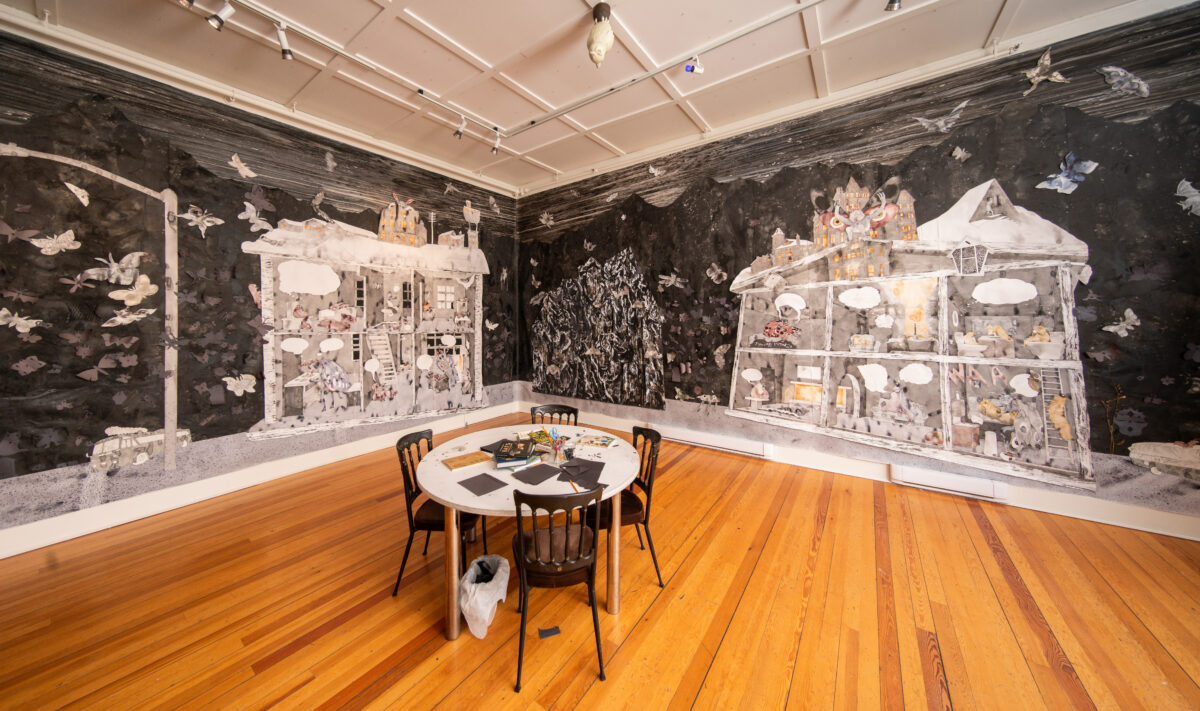When walking in the dark, perception depends on the aim and scope of one’s flashlight. Like a net, sheets of paper can catch the moths who flitter through the light of consciousness. As a free-associative, nonverbal mode of thinking, drawing is closely related to daydreaming and storytelling. Lines of ink interweave with lines of thought to cast webs around the rooms in one’s mind. These webs sometimes catch surprising things, sometimes snap, and sometimes are mended back into new forms.
MOTH HOUSE is a process-based, panoramic drawing installation, inspired by the nocturnal visitors in my backyard pollinator garden. Over the course of this exhibition, I will occasionally return to work by night, elaborating upon and transforming the gallery. Visitors are also encouraged to participate by cutting out their own moths with construction paper and scissors and pinning the moths into the installation. The drawings of houses are based on doll houses, simultaneously revealing both inside and out. This is meant as an ecological challenge to the perceived separation between domestic, urban, and wild settings. The rooms within are like comic book frames, in which the characters are insects. These macroscopic beings are meanwhile occupied with the activities of ordinary domestic life, such as scrolling phones, tending to larva, sleeping and dreaming. Some are engaged in conversation, emitting speech balloons and thought bubbles which contain visual thoughts. Outside, a vast, night-time scene churns with moths, mountains, and a village of heritage buildings observed between Nelson and Kaslo.
While the humour in MOTH HOUSE is intentional, I wish to convey that moths and other insects are interesting, important, overlooked, and in danger. According to National Geographic, 40% of insect species, particularly moths and butterflies, are globally in decline. This is due to habitat loss, climatic change, light pollution, invasive species, and the intensive use of pesticides. Being nocturnal, moths receive much less attention than butterflies, despite being more biodiverse. An abundance of moths is indicative of healthy ecosystems. Moths and caterpillars are integral to pollination and food webs. Insectivores, especially bats, but also birds, amphibians, reptiles, fish, spiders, and even bears depend on moths as food sources.
Humankind is not prone to care about what we cannot see, or what we do not know exists. Within MOTH HOUSE, my intention is to seek empathy with profound alterity, and to make visible the denizens of an unseen world.
MOTH HOUSE. 67×14′ drawing installation at the Langham Cultural Centre, in Kaslo, British Columbia. Ink, graphite, watercolour and collage, with soundscape by Jesse Lee. March 7th – May 9th 2025
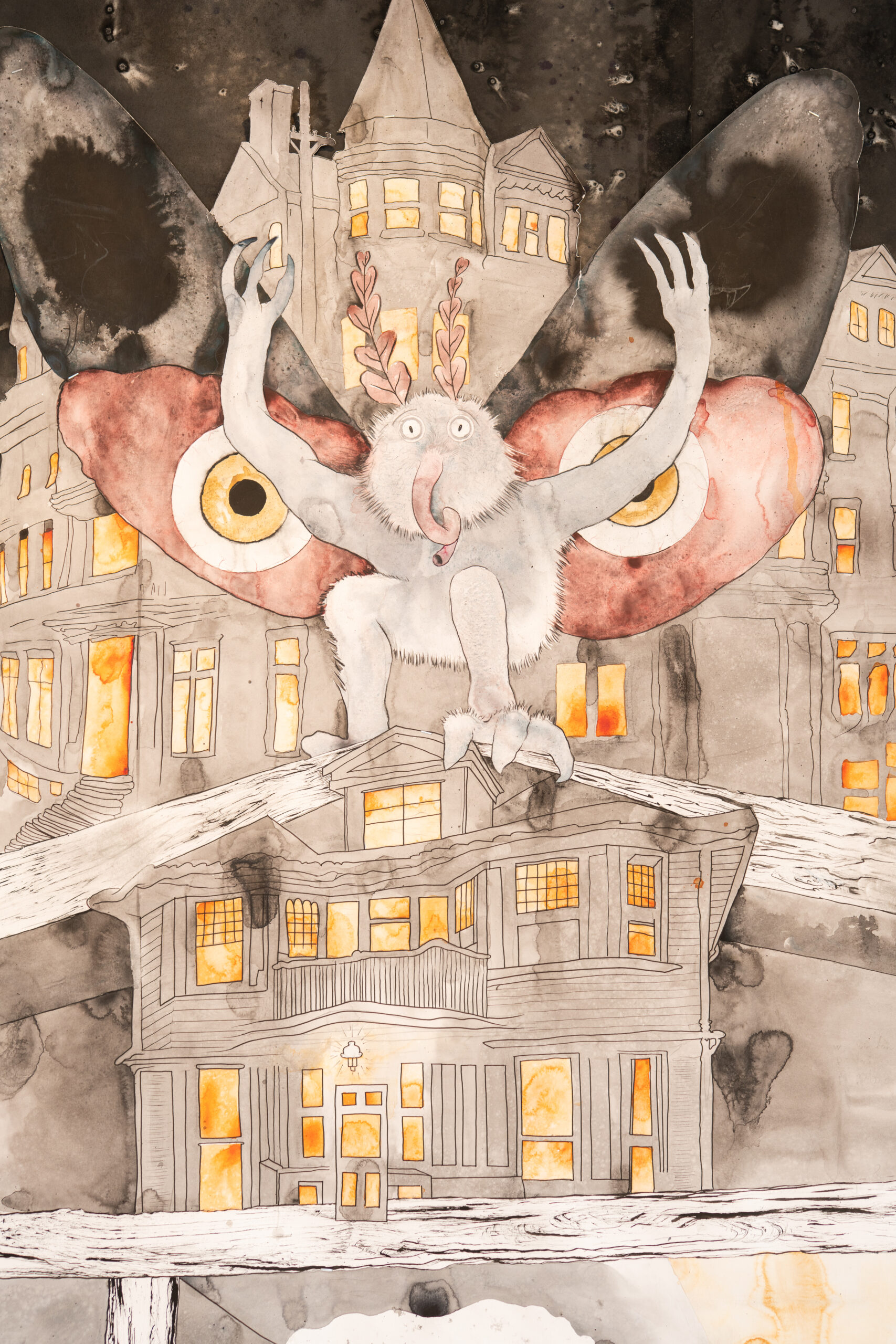
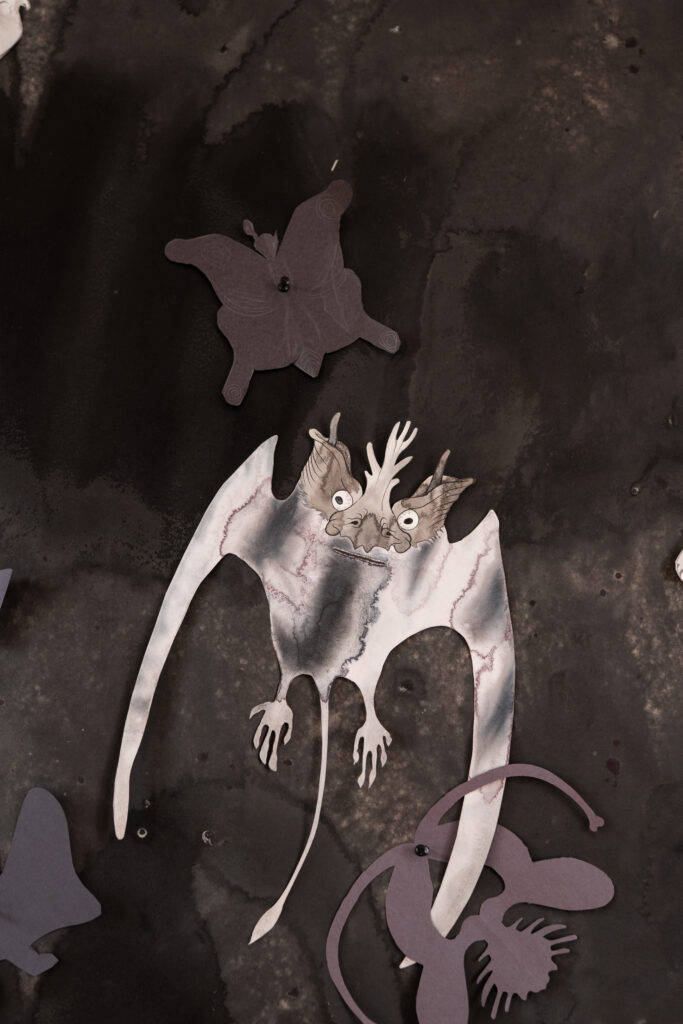
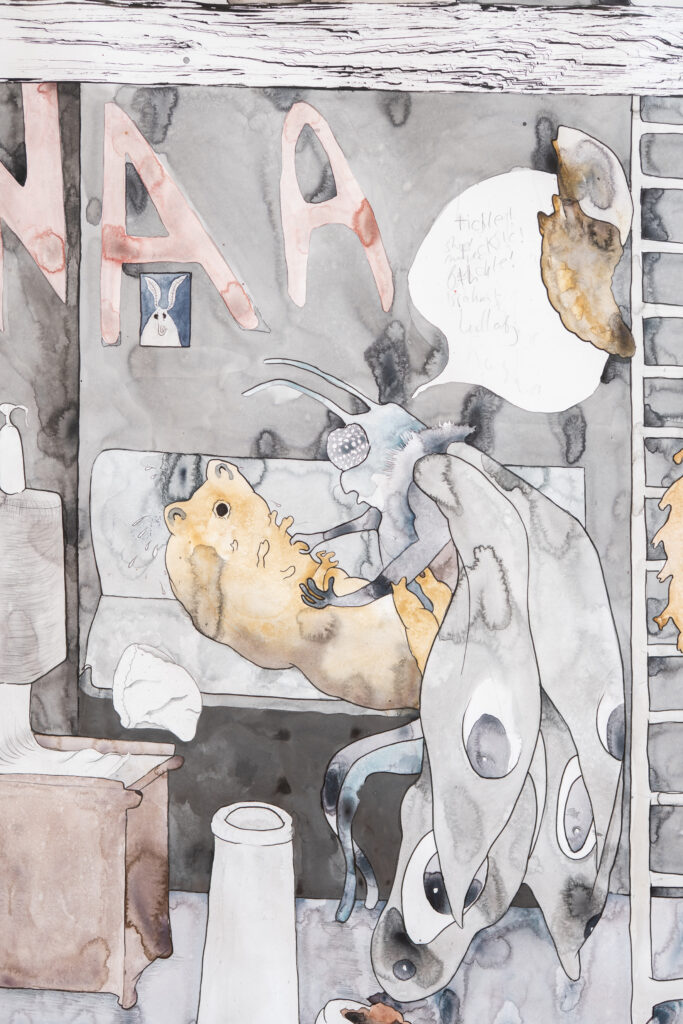
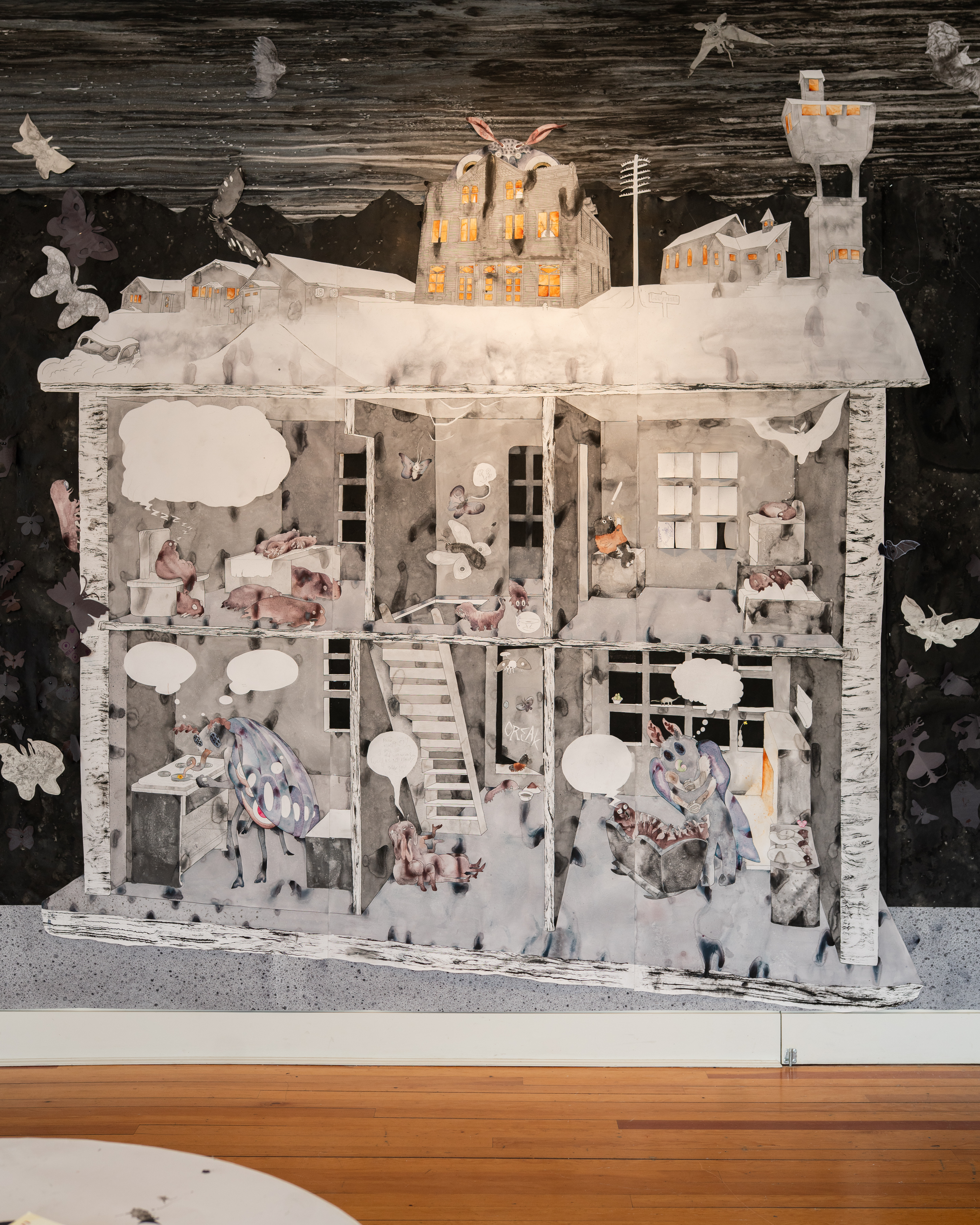

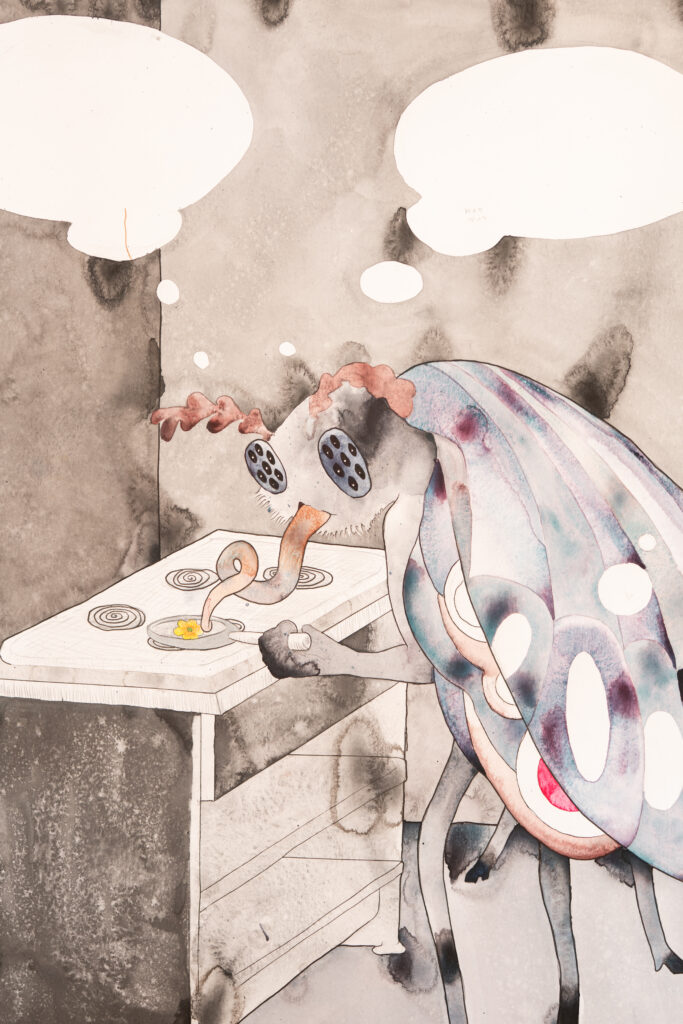
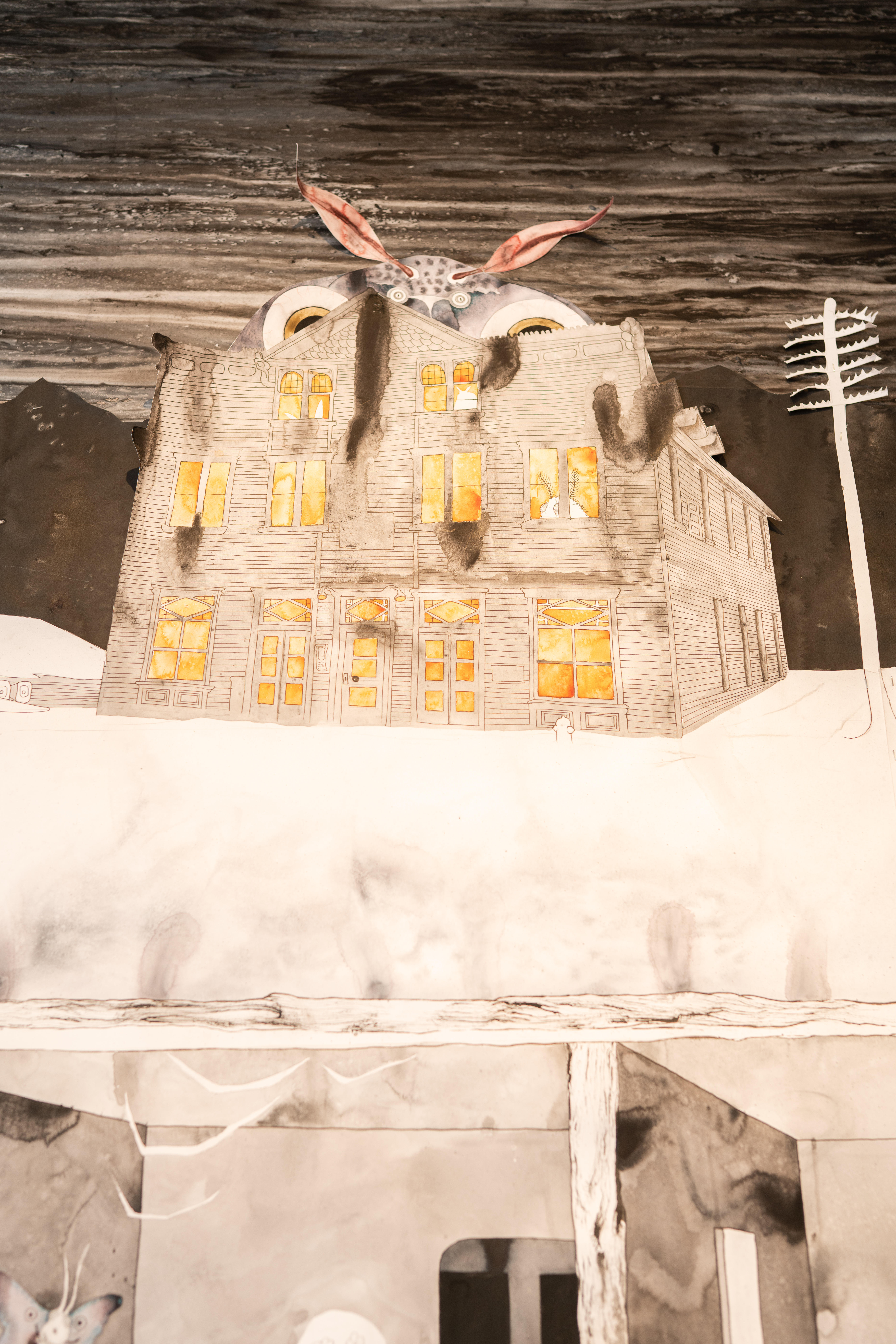
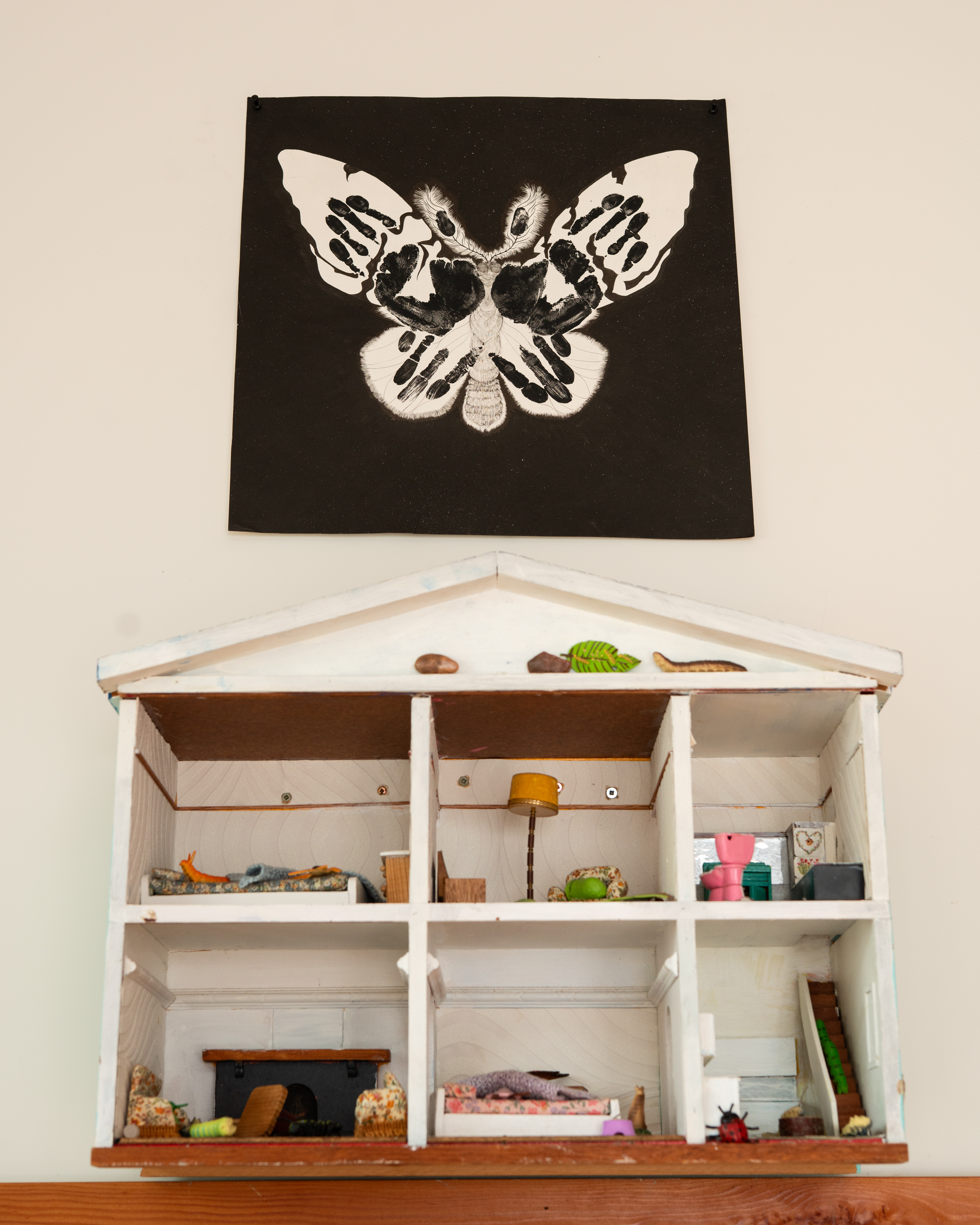
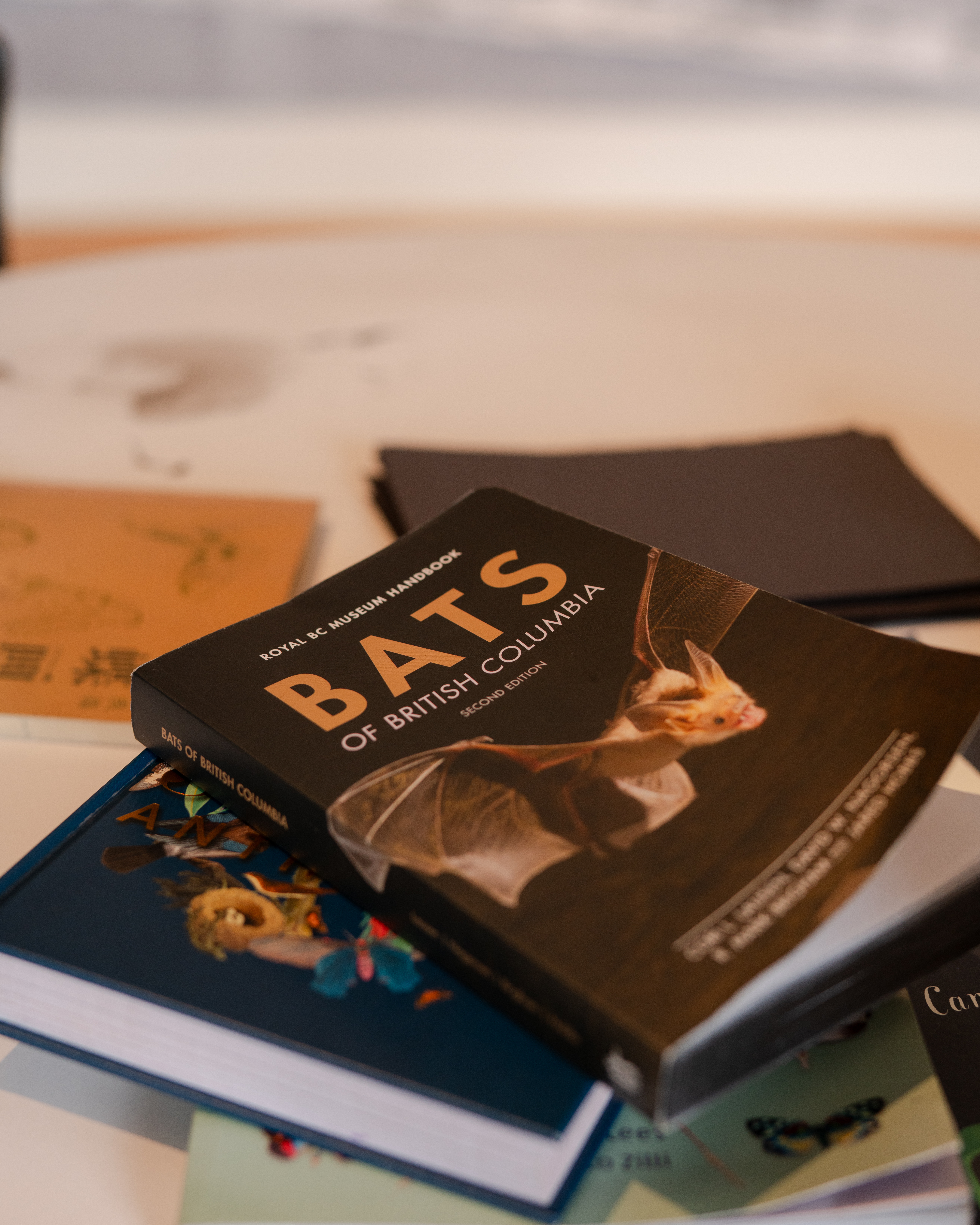

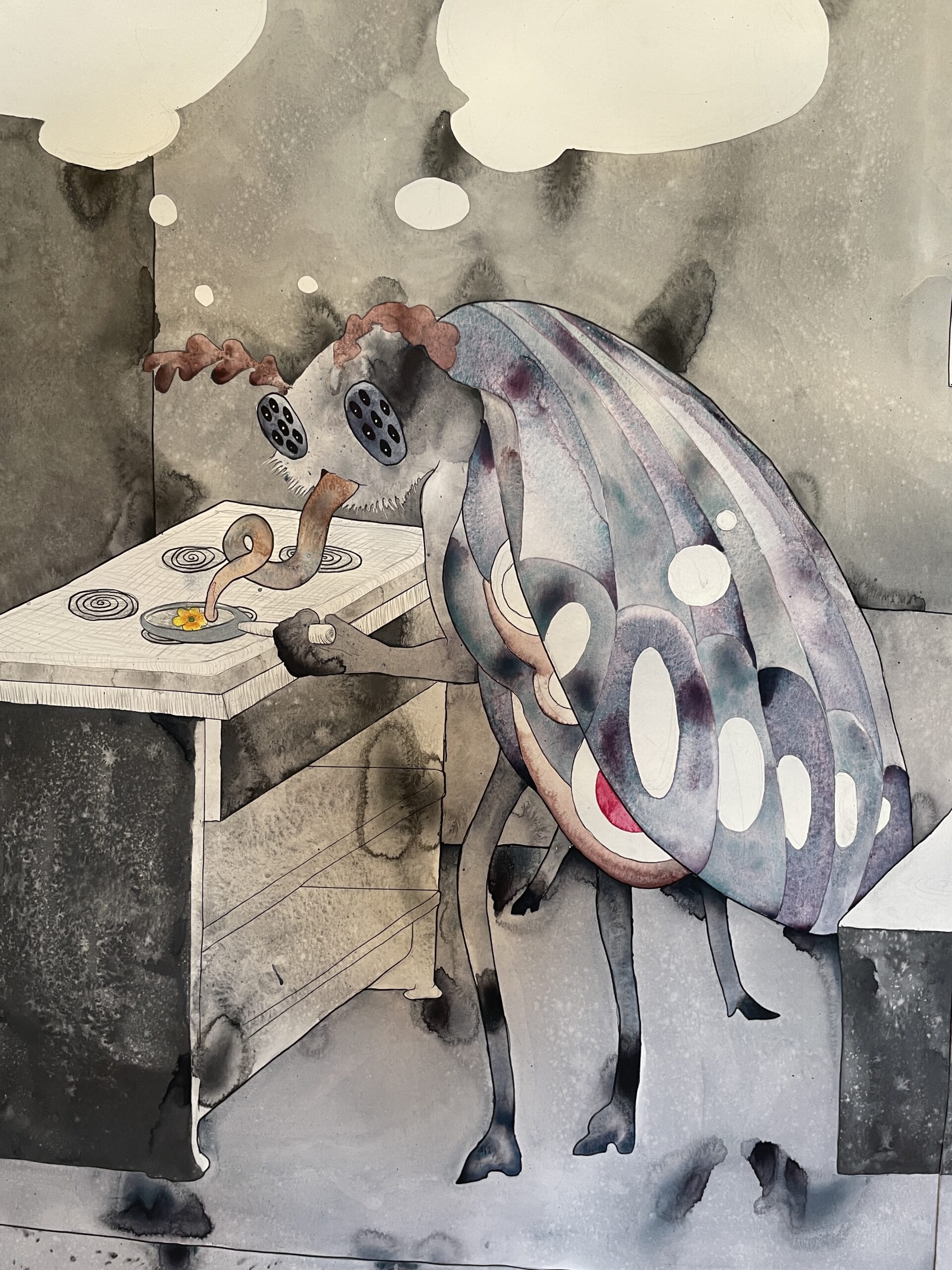
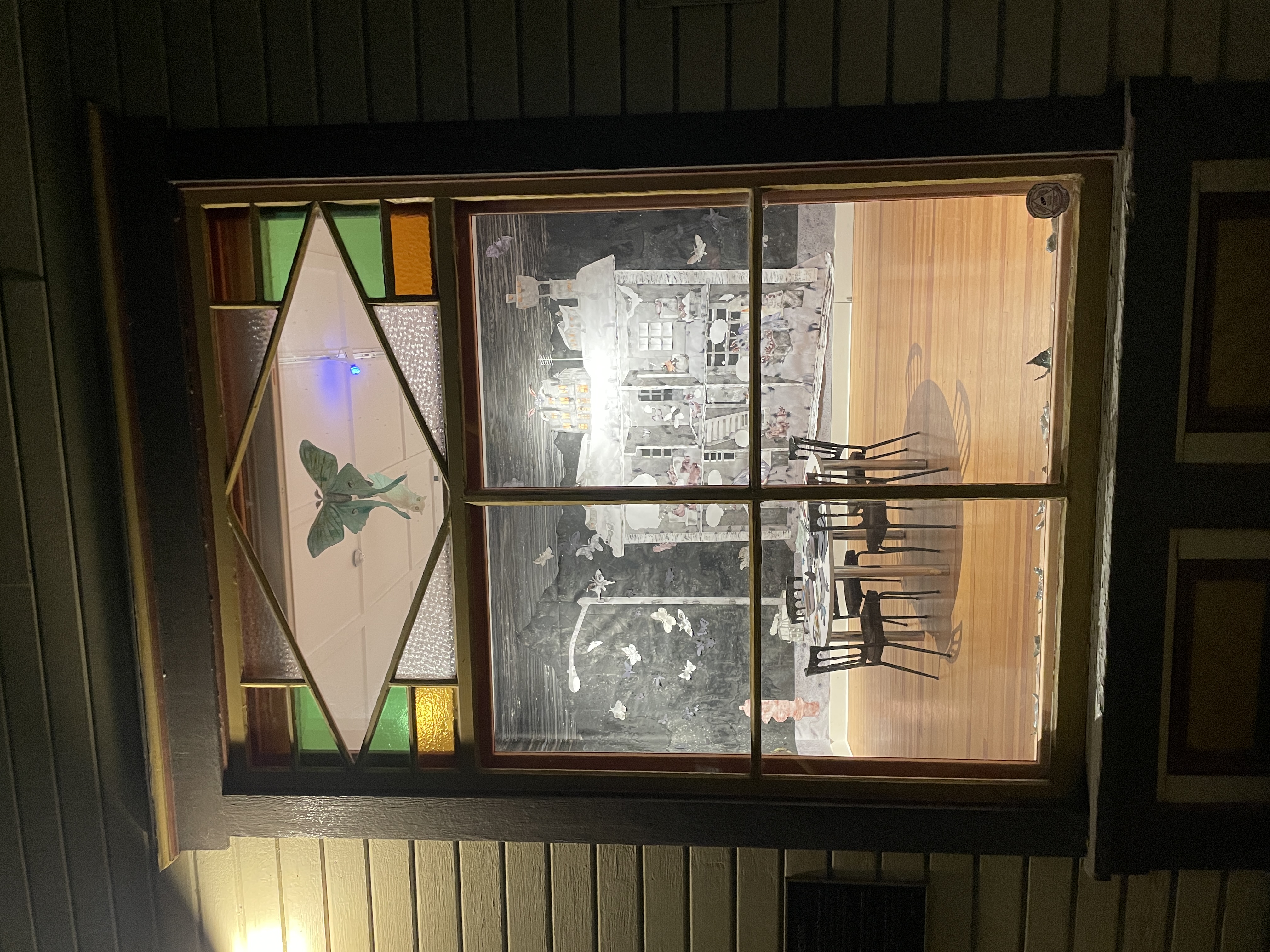

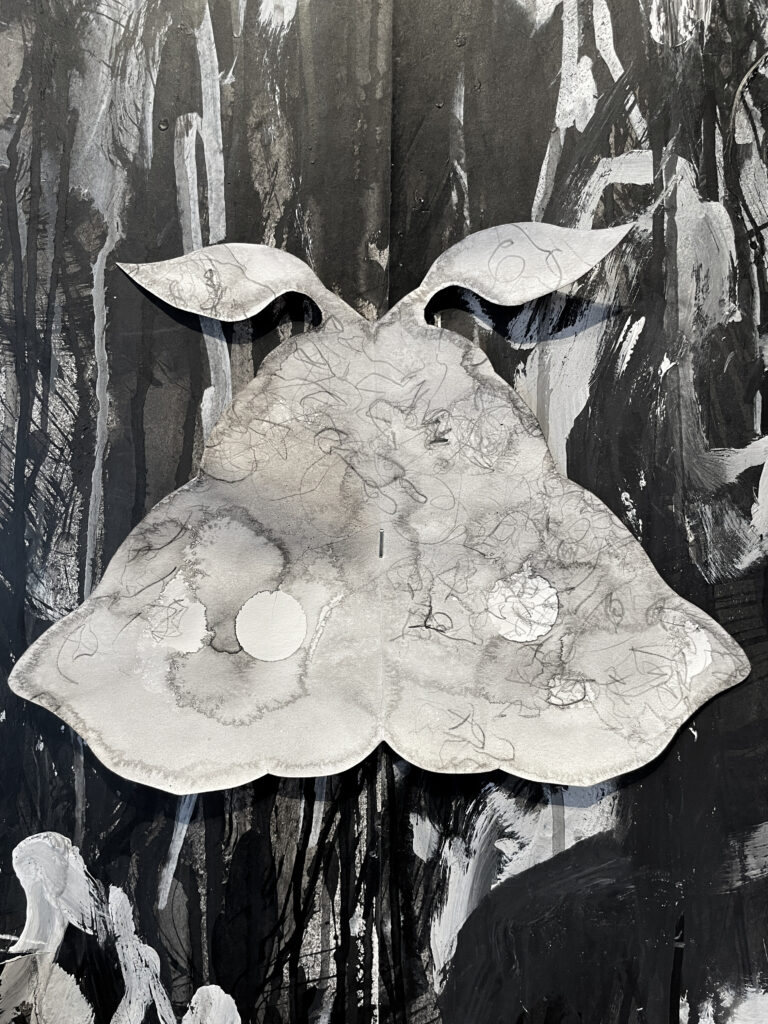

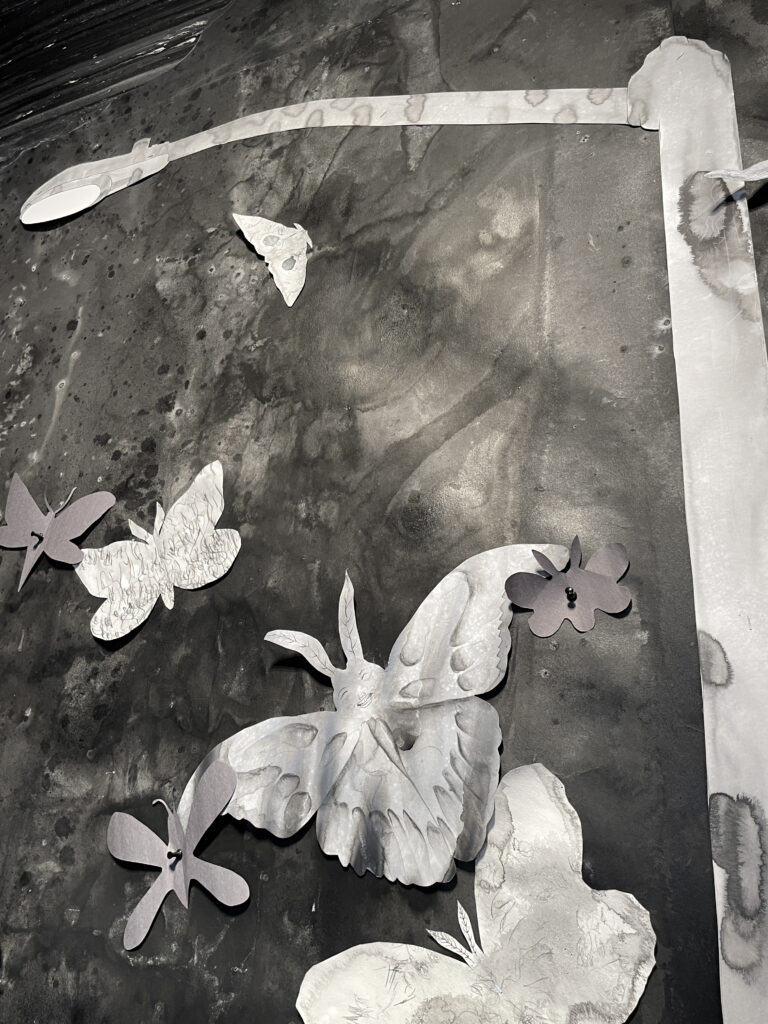
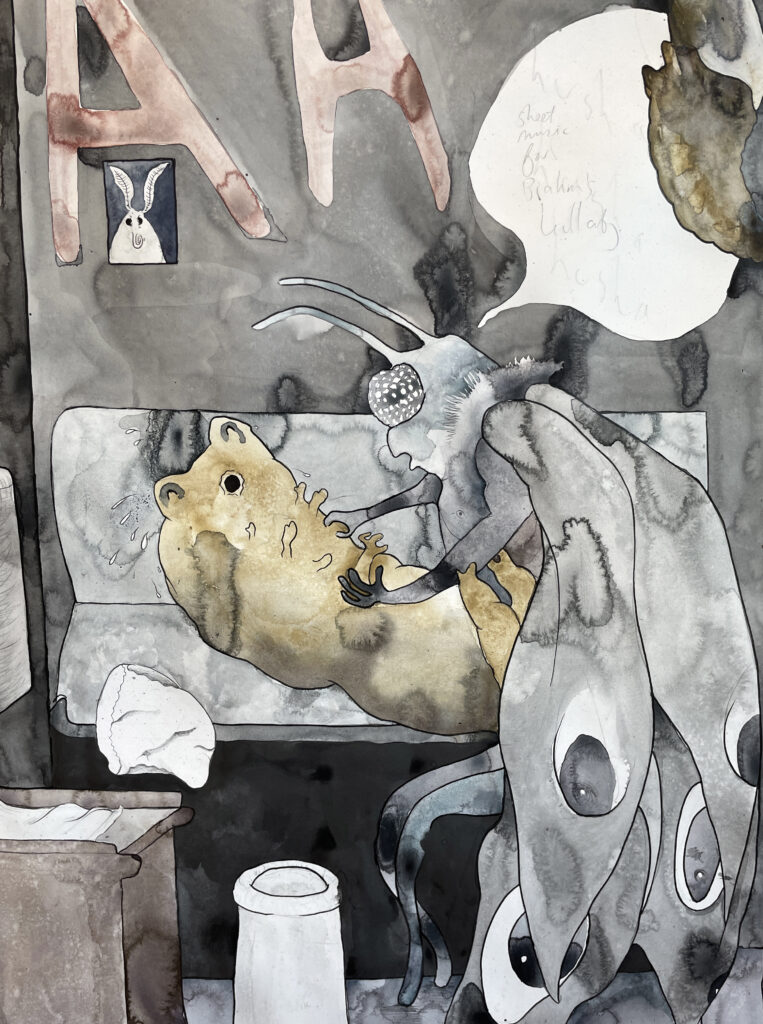

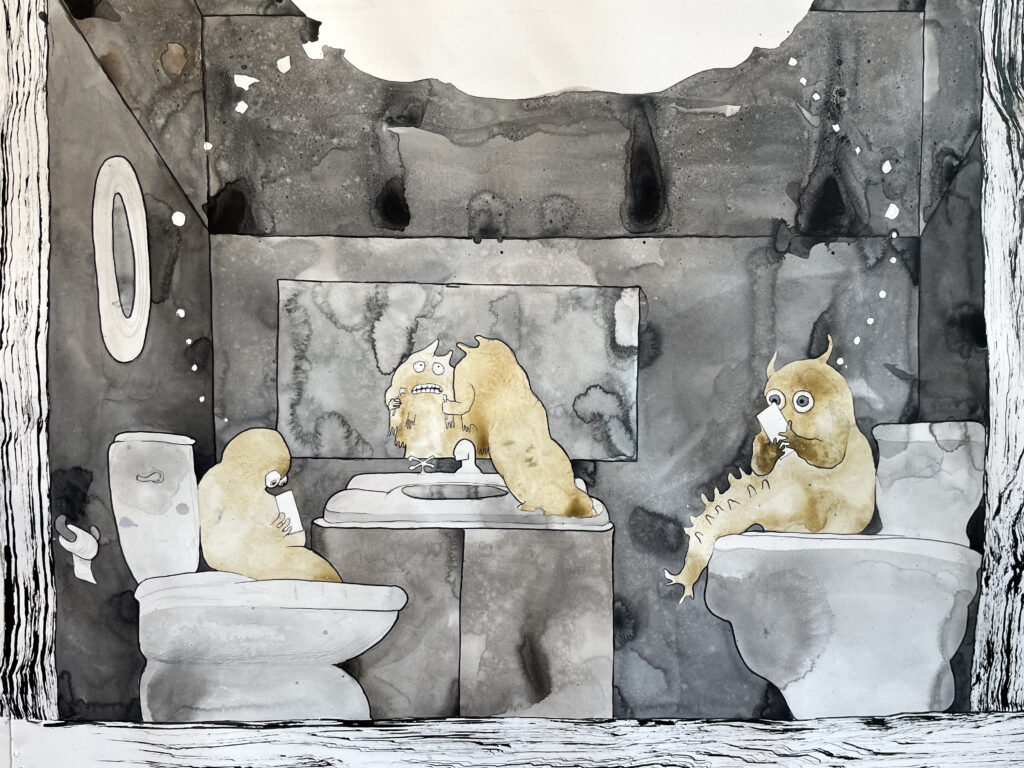
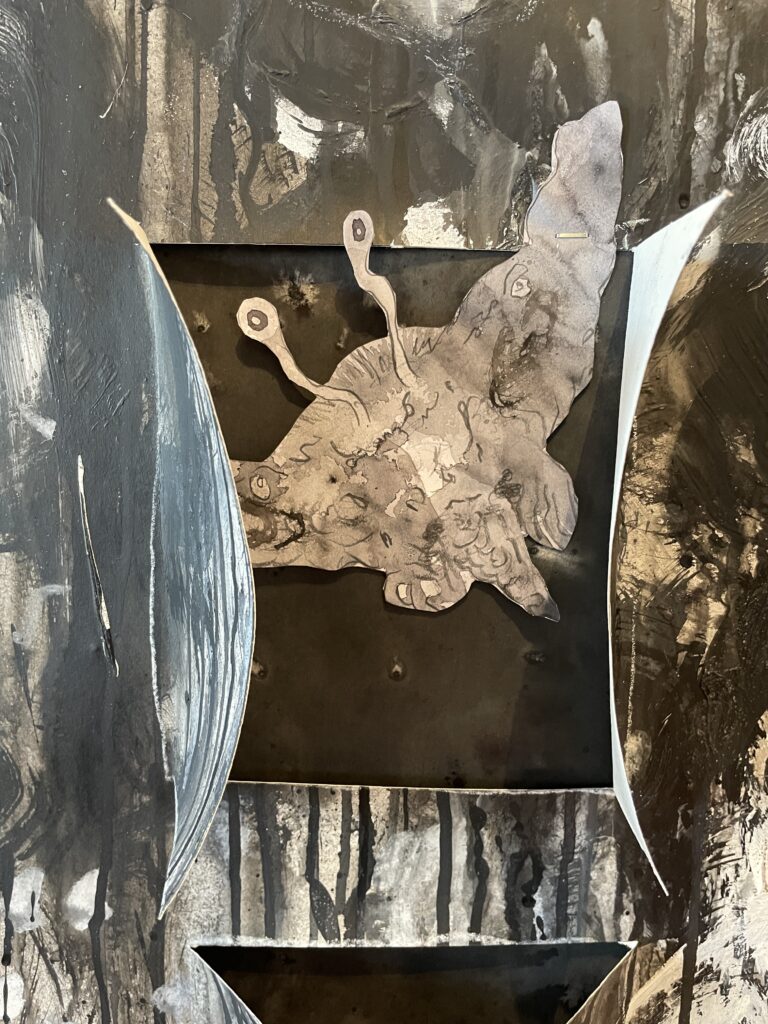
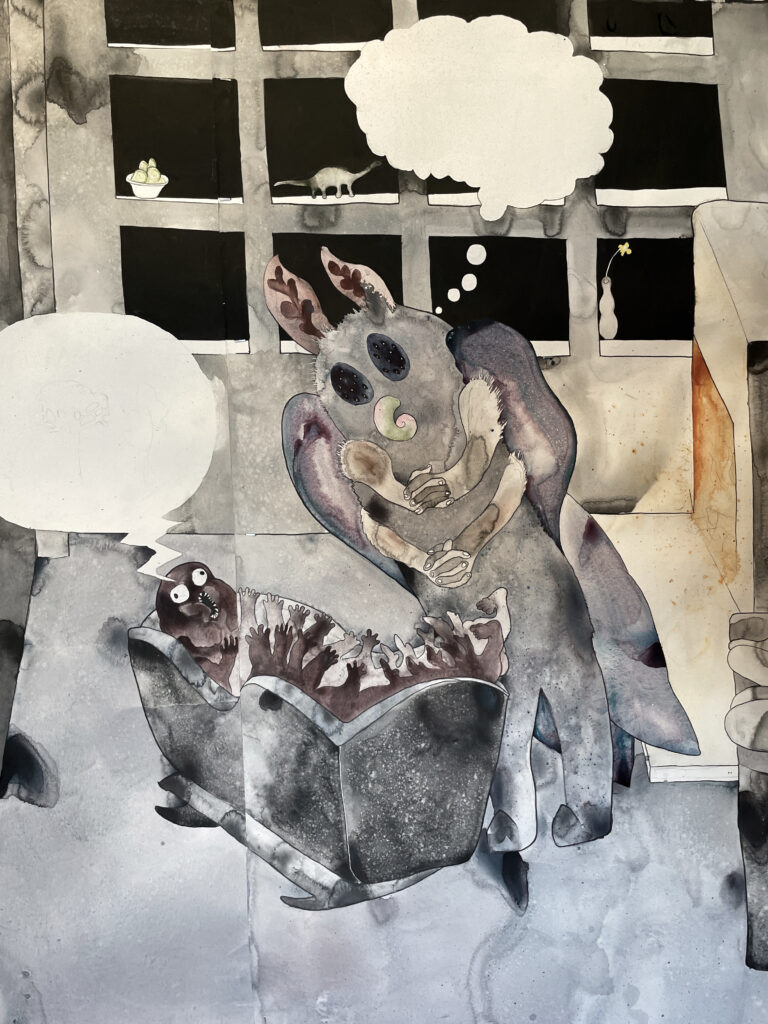
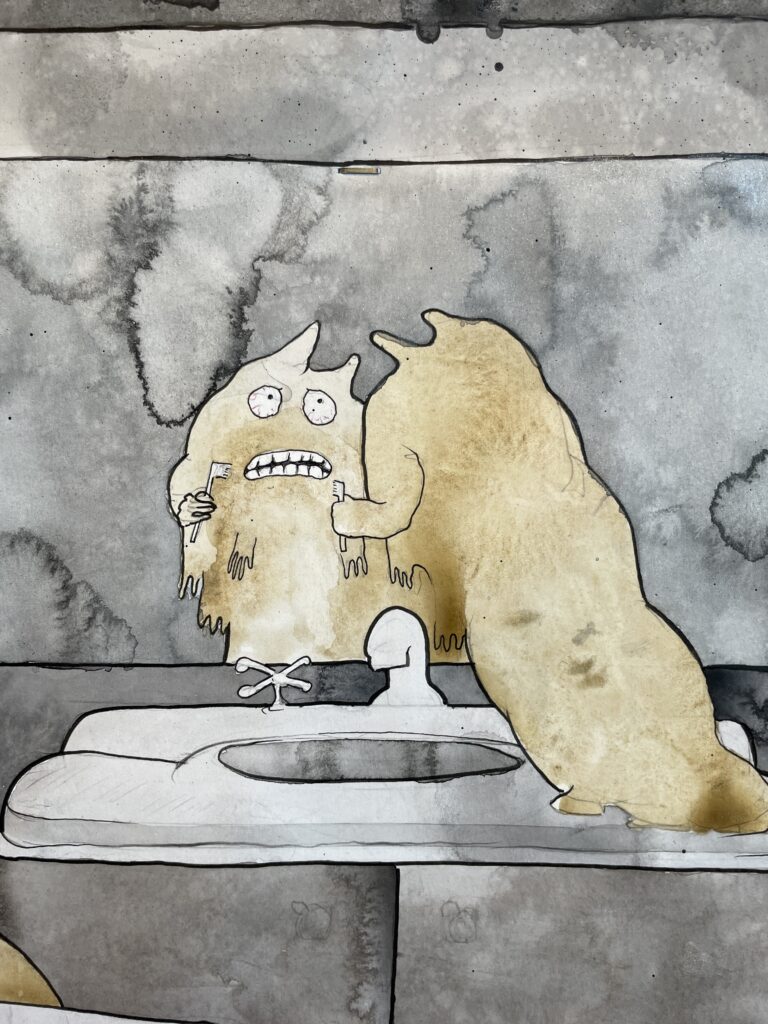
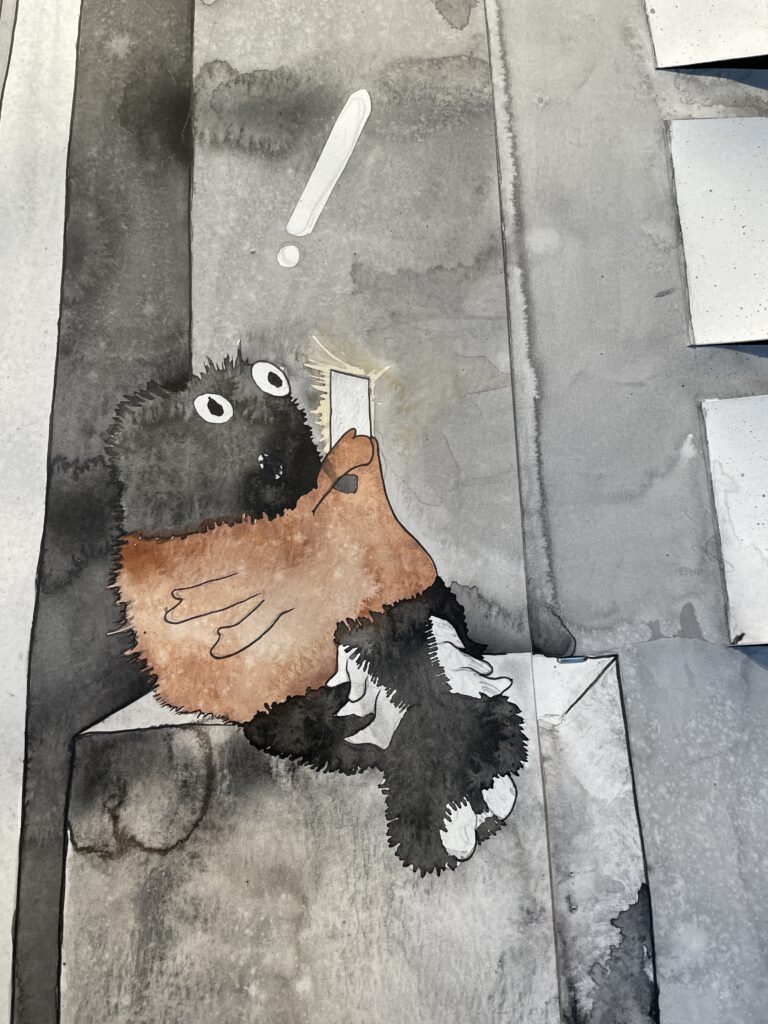
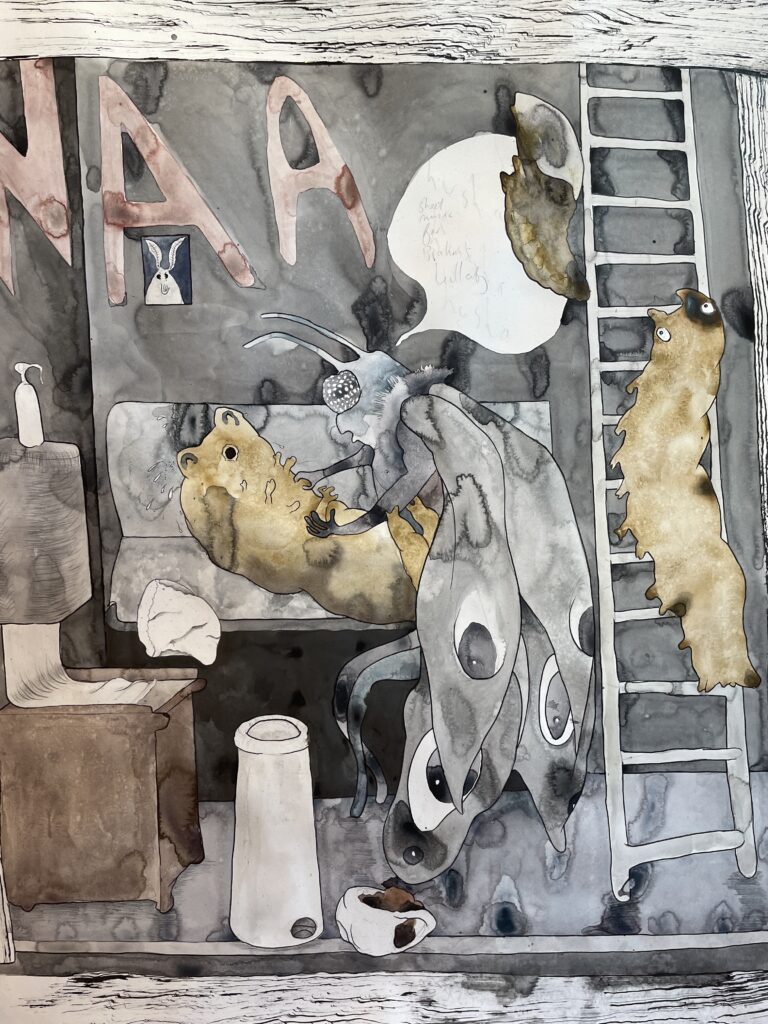
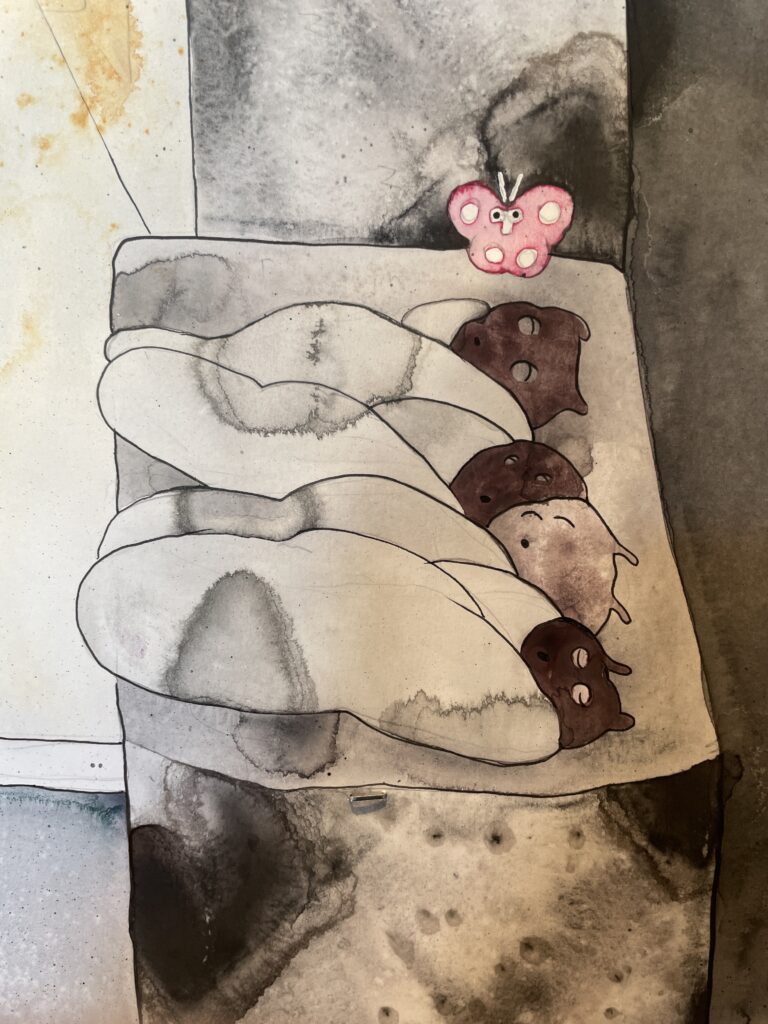
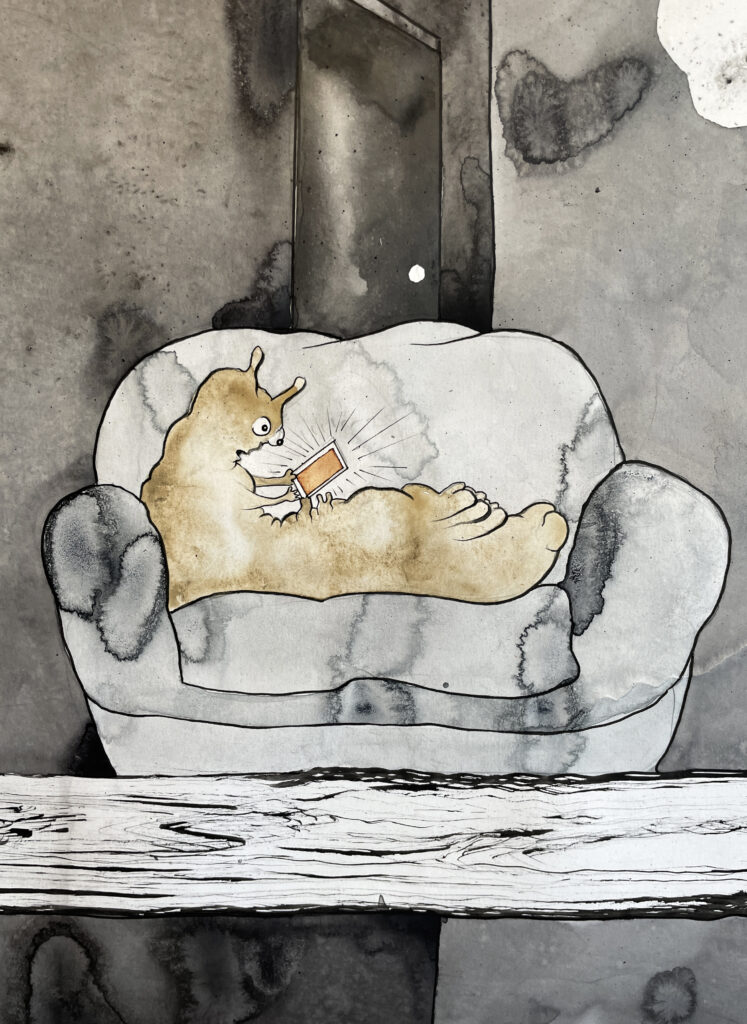
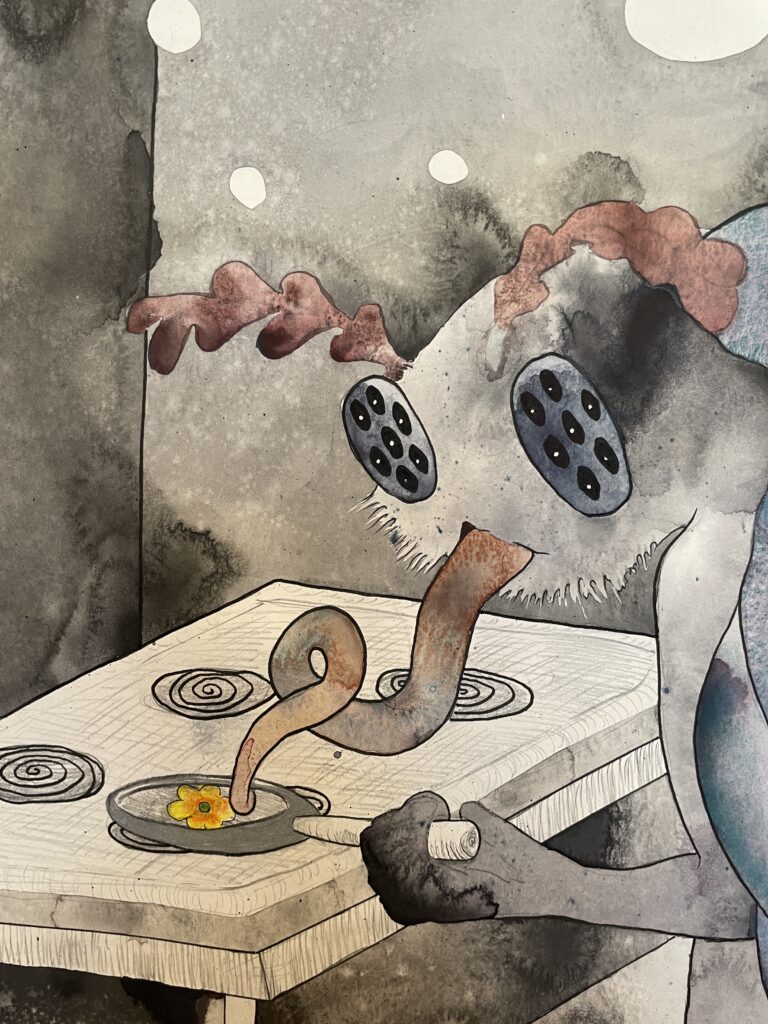
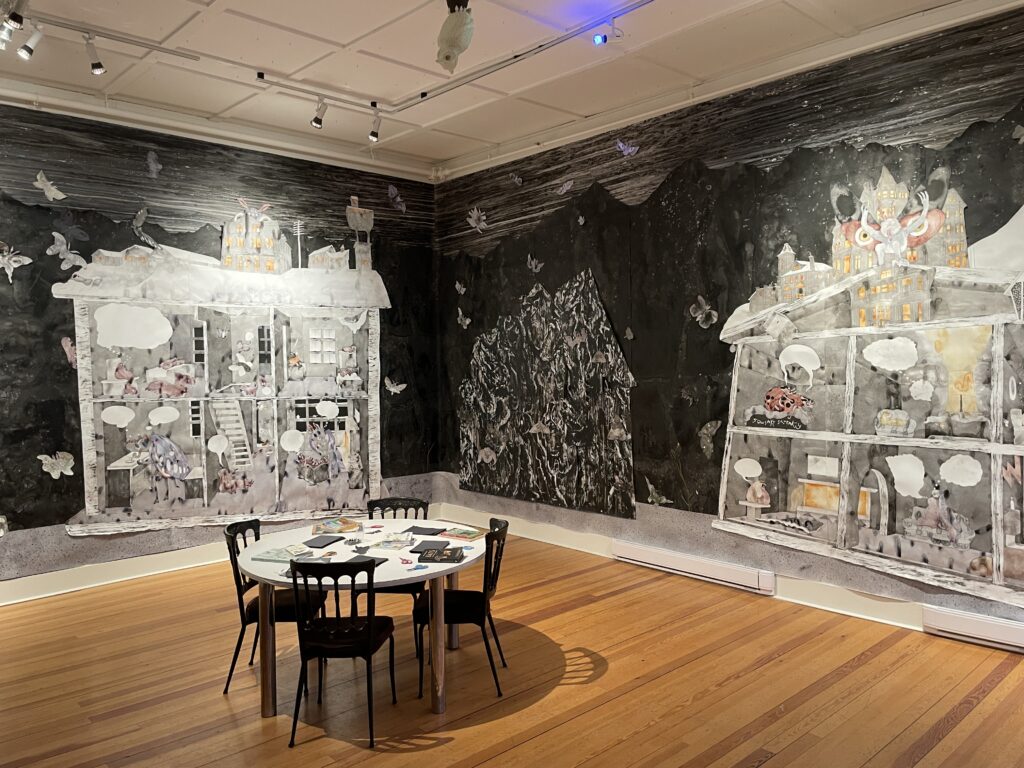
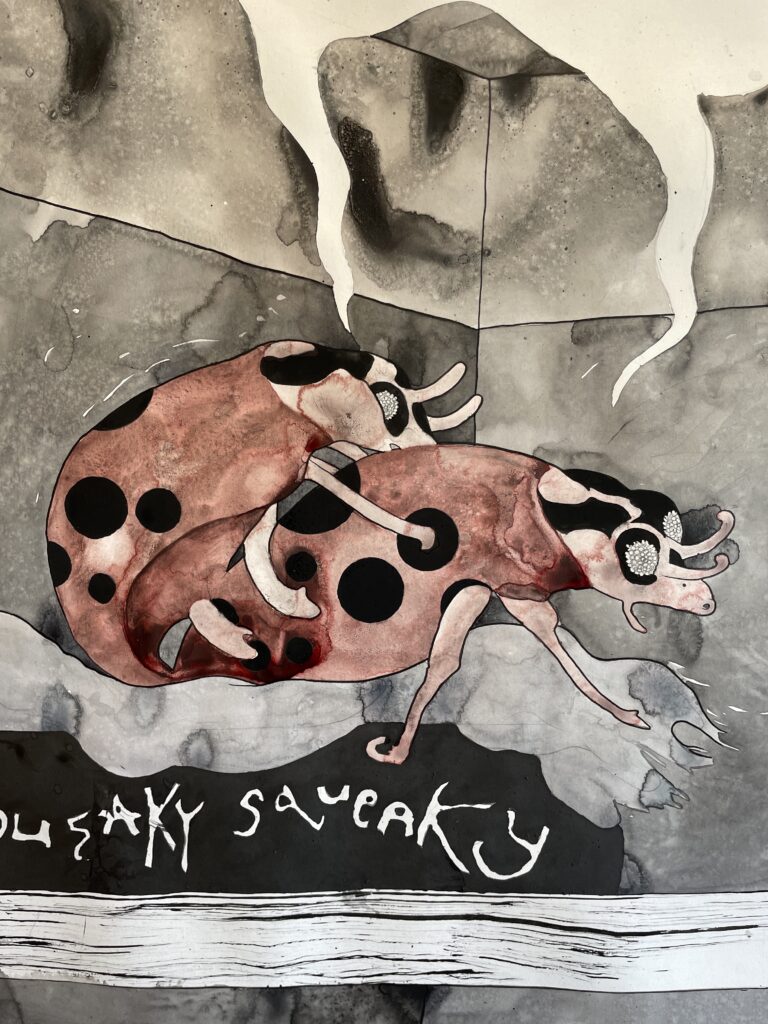
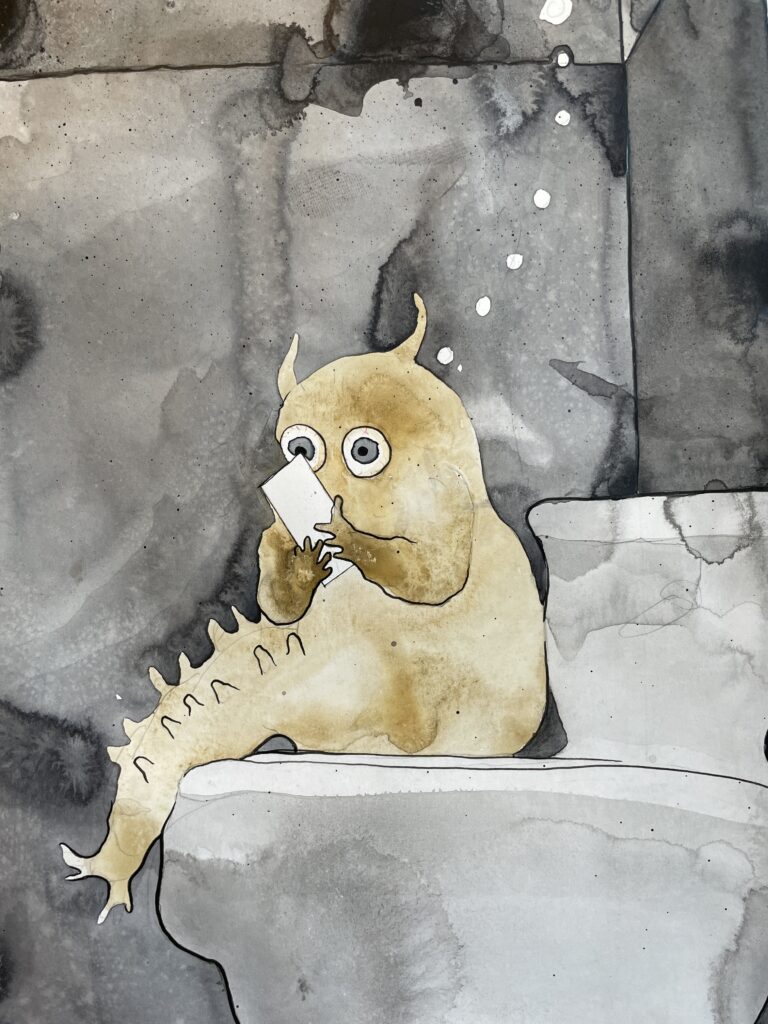
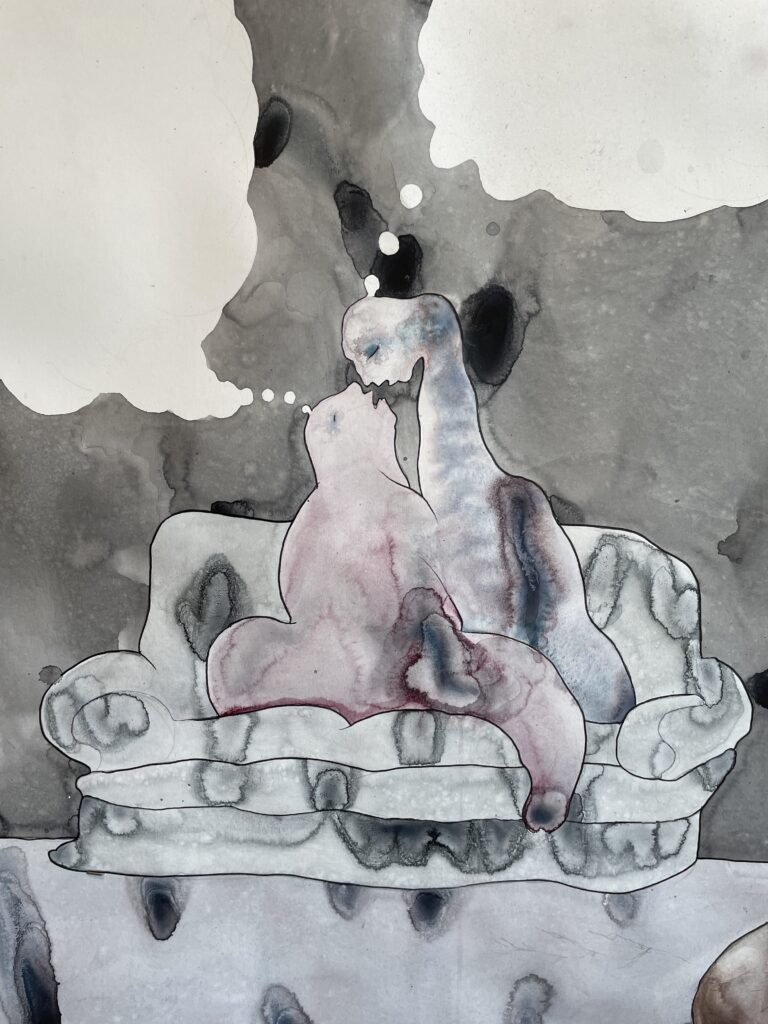
Photo credit: Kenton Doupe
